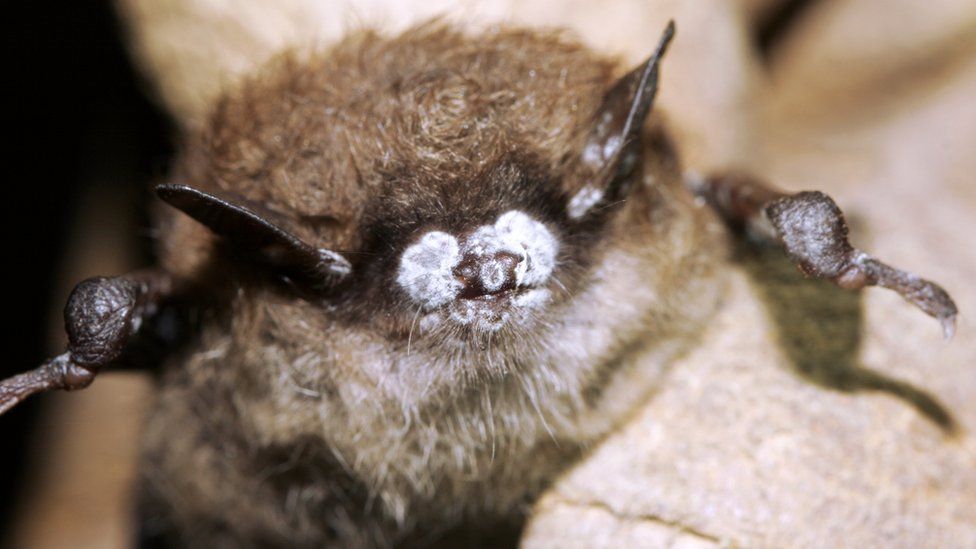Asian bats show resistance to deadly white-nose syndrome
- Published

Researchers have found new clues about the deadly white-nose syndrome, a disease that has wiped out millions of bats in North America.
A study found that bats in China showed strong resistance to the fungal infection responsible for the deaths.
The fungus invades the skin of the bats and causes characteristic white markings on the face and wings.
The scientists involved in the report say some American species may evolve the ability to fight the disease.
White nose syndrome (WNS) is the name given to the bat disease caused by exposure to the fungus, Pseudogymnoascus destructans.
The fungus thrives in the cold, damp caves frequented by bats.
Recent research indicates that it most likely originated in Europe and was carried to North America by humans.
Since the disease first appeared in the US in 2006, it has caused mass die-offs of bats, with an estimated six million dead so far.
Disturbed sleep
As well as a whitening of face and wings, the disease rouses bats from their hibernating states prematurely, causing them to use up their stores of fat. They fly around and usually starve or freeze to death.
European bats seem to have evolved resistance to the fungus. This new study suggests that resistance is widely found in Asian bats as well.
The scientists compared bats from five sites in China and five in the US, from similar latitudes and climates.
"Uniformly, across all the species we sampled in China, we found much lower levels of infection," said author Joseph Hoyt, from the University of California, Santa Cruz.
"Both the fraction of bats infected and the amount of fungus on infected bats were lower than in North America," he said.
The scientists investigated four possible reasons as to why the Asian bats were unaffected by the fungus.
These included host tolerance, host resistance, lower transmission due to smaller populations or lower fungal growth rates due to environmental factors.
The study findings support the idea that host resistance was the crucial factor.
The researchers say that genetics may be at play. They point to a North American species called the little brown bat. Overall these had much higher levels of infection than Asian bats but some individuals had very low fungal loads.
By contrast, northern long-eared bats showed very little variability in the amount of fungus in their systems. As a result say the scientists, their prospects are poor.
"The northern long-eared bat suffers really high fungal loads, and nearly all individuals are infected, there's no overlap with the Asian species," said co-author Kate Langwig.
"From previous work, we've seen their populations crashing toward extinction, so it could be a poor omen for that species."
If these differences are down to genes then it offers hope for at least some American species which may be able to evolve resistance if they have enough time.
The authors, however, are unsure which genes are having the positive impact.
"It doesn't have to be the same strategy for every species, it could be differences in the skin microbiome in one and hibernation behaviour in another, said Kate Langwig.
"But we just don't have those details yet," she added.
Follow Matt on Twitter @mattmcgrathbbc and on Facebook.